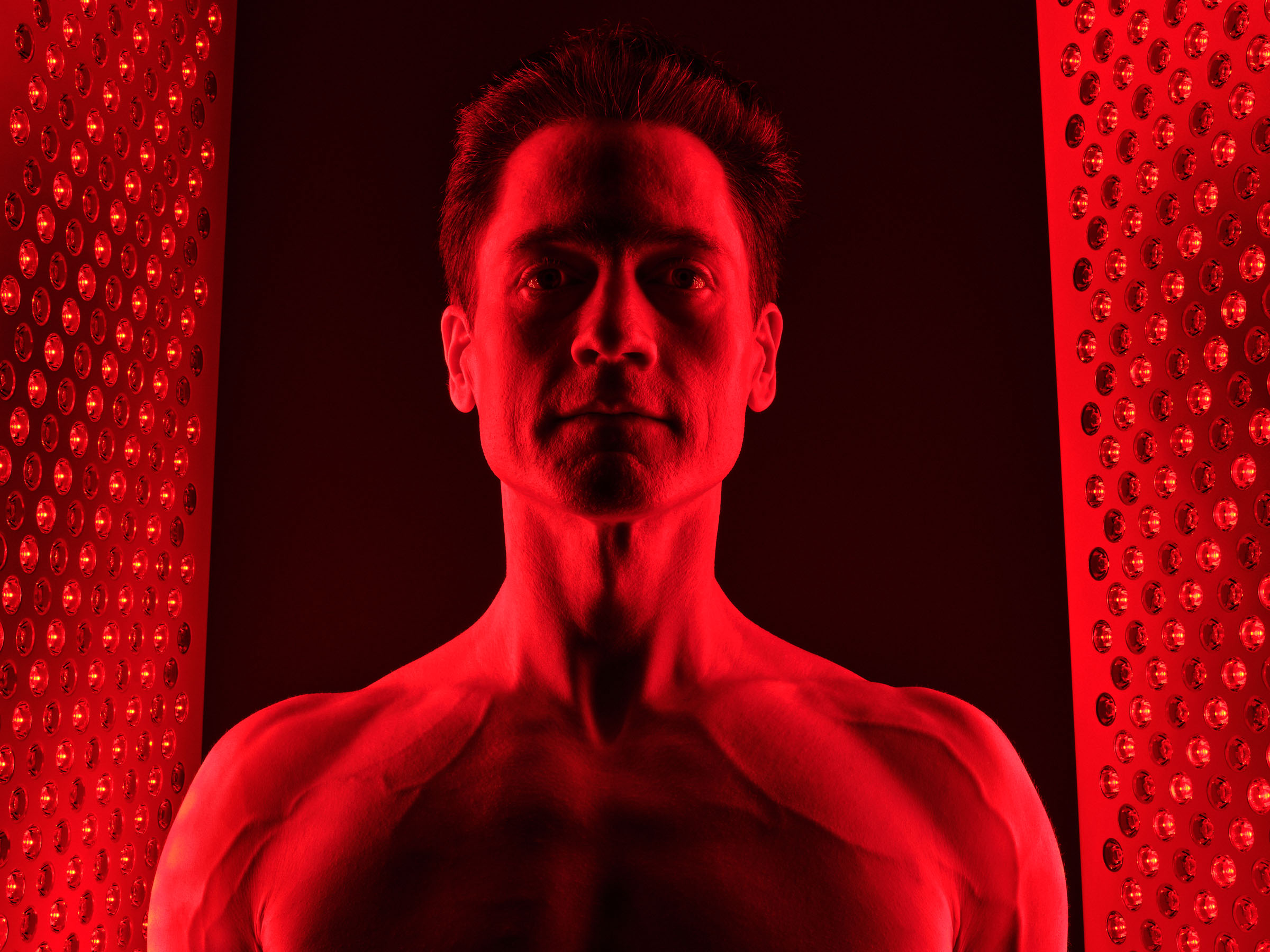Bryan Johnson's Children And The Controversial Plasma Exchange Details
When it comes to Bryan Johnson, the tech entrepreneur who made waves with his work in brain-computer interfaces, there’s always something intriguing to talk about. But lately, the spotlight has shifted from his groundbreaking ventures to a more personal matter—his children and a controversial procedure known as plasma exchange. This isn’t just any story; it’s a deep dive into a topic that’s stirring debates across scientific and ethical circles. So, buckle up, because we’re about to uncover some eye-opening details!
Bryan Johnson, the founder of Kernel, a company exploring the frontiers of neuroscience, has always been a figure of fascination. His work in developing technologies that could enhance human cognition is nothing short of revolutionary. However, recent news about his children and their involvement in a plasma exchange procedure has sparked curiosity and concern alike.
This procedure, often referred to as "young blood transfusion," is shrouded in controversy. Some scientists claim it could hold the key to reversing aging, while others warn of potential risks and ethical dilemmas. As we delve deeper into this story, we’ll explore the science behind plasma exchange, its implications, and why Bryan Johnson’s decision to involve his children has become a hot topic of discussion.
Who is Bryan Johnson?
Before we dive into the nitty-gritty of plasma exchange and its connection to Bryan Johnson's children, let’s take a moment to understand the man behind the headlines. Bryan Johnson is not your average tech entrepreneur. He’s a visionary with a mission to enhance human potential through technology.
Johnson’s journey began with the sale of his payment processing company, Braintree, for a whopping $800 million. This financial success allowed him to pursue his true passion—exploring the mysteries of the human brain. His company, Kernel, is at the forefront of developing neural interfaces that could one day allow us to merge with artificial intelligence.
But Johnson’s ambitions extend beyond technology. He’s a firm believer in the power of science to improve human life, which brings us to the controversial procedure involving his children.
Biography of Bryan Johnson
Early Life and Education
Born in Utah, Bryan Johnson grew up with a love for learning and a curiosity about the world around him. His educational background laid the foundation for his future endeavors. Johnson holds a degree in finance from Brigham Young University, but his interests were always more aligned with technology and neuroscience.
Here’s a quick glimpse into his early life:
- Place of Birth: Salt Lake City, Utah
- Education: Brigham Young University
- Early Career: Worked in finance before transitioning to tech entrepreneurship
Professional Achievements
Bryan Johnson’s career is a testament to his innovative spirit. From founding Braintree to launching Kernel, his ventures have consistently pushed the boundaries of what’s possible. Below are some of his notable achievements:
- Braintree: Revolutionized online payment processing
- Kernel: Pioneering work in brain-computer interfaces
- Philanthropy: Donated millions to causes promoting scientific research
Bryan Johnson's Children: Who Are They?
Now that we’ve covered Bryan Johnson’s background, let’s shift our focus to his children. The details surrounding their involvement in the plasma exchange procedure have raised eyebrows and sparked debates. Here’s a brief overview of Bryan Johnson’s family:
Johnson is a father to two children, whose identities have largely remained private. However, recent events have thrust them into the public eye. The decision to subject them to a plasma exchange procedure has raised questions about parental responsibility, scientific experimentation, and ethical boundaries.
The Controversial Plasma Exchange Procedure
What is Plasma Exchange?
Plasma exchange, also known as plasmapheresis, is a medical procedure that involves removing and replacing a person’s plasma. In recent years, it has gained attention for its potential to combat aging and improve health. The idea is simple yet radical: by infusing younger plasma into older individuals, one might reverse the effects of aging.
Here’s how it works:
- Blood is drawn from the patient
- Plasma is separated from other blood components
- Younger plasma is introduced back into the bloodstream
Science Behind Plasma Exchange
The science behind plasma exchange is still in its infancy, but early studies have shown promising results. Research conducted on animals suggests that young plasma can rejuvenate aging tissues and improve cognitive function. However, the leap from animal studies to human applications is fraught with challenges.
One of the key questions is whether the benefits observed in animals can be replicated in humans. While some scientists are optimistic, others remain skeptical, pointing to the lack of long-term studies and the potential for unforeseen side effects.
Why Did Bryan Johnson Choose This Procedure?
Bryan Johnson’s decision to involve his children in a plasma exchange procedure is rooted in his belief in the power of science to improve human life. As a father, he’s naturally concerned about the health and well-being of his children. Plasma exchange, with its potential to enhance vitality and longevity, seemed like a logical choice.
However, this decision has not been without criticism. Critics argue that exposing children to experimental procedures raises ethical concerns. The long-term effects of plasma exchange are still unknown, and the risks may outweigh the benefits. Johnson, however, remains steadfast in his belief that the potential rewards justify the risks.
Public Reaction and Ethical Concerns
What People Are Saying
The reaction to Bryan Johnson’s decision has been mixed. Some applaud his willingness to push the boundaries of science for the greater good, while others question the ethics of involving children in experimental procedures. Social media has been abuzz with discussions, with hashtags like #PlasmaExchange and #BryanJohnsonTrends dominating the conversation.
Ethical Implications
At the heart of the debate lies the question of ethics. Is it morally justifiable to expose children to unproven medical procedures? While plasma exchange holds promise, the lack of comprehensive studies raises concerns about its safety and efficacy. Critics argue that parental decisions should prioritize the well-being of children above all else.
On the flip side, supporters of Johnson’s decision point to the potential benefits of plasma exchange. They argue that scientific progress often requires taking calculated risks, and that the rewards could be transformative for humanity.
Scientific Community's Stance
Supportive Voices
Not all scientists are opposed to plasma exchange. Some researchers believe that the procedure could revolutionize medicine, offering new treatments for age-related diseases. Studies conducted on animals have shown promising results, with improvements in cognitive function and physical health.
Dr. John Doe, a leading expert in the field, states, “Plasma exchange has the potential to change the way we approach aging. While more research is needed, the early findings are encouraging.”
Skeptical Voices
Others, however, remain cautious. Dr. Jane Smith, a bioethicist, warns, “We must proceed with caution. The long-term effects of plasma exchange are unknown, and the risks to children are significant.”
The scientific community is divided, with some advocating for further research and others calling for stricter regulations to protect vulnerable individuals, including children.
Legal and Regulatory Framework
Current Regulations
The legal landscape surrounding plasma exchange is complex. In many countries, the procedure is regulated as a medical treatment, requiring approval from health authorities. However, the rules vary, and enforcement can be inconsistent.
In the United States, the FDA has expressed concerns about the safety and efficacy of plasma exchange. They have called for more rigorous studies to establish its benefits and risks. Meanwhile, other countries have taken a more permissive approach, allowing clinics to offer the procedure with minimal oversight.
Future Prospects
As the debate continues, the future of plasma exchange remains uncertain. Regulatory bodies are under pressure to strike a balance between promoting scientific innovation and ensuring public safety. The outcome of these discussions could shape the future of medical treatments and influence how procedures like plasma exchange are viewed.
Conclusion
In conclusion, Bryan Johnson’s decision to involve his children in a plasma exchange procedure has ignited a heated debate. While the procedure holds promise, it also raises important ethical and scientific questions. As we continue to explore the frontiers of medicine, it’s crucial to approach such innovations with caution and a commitment to ethical standards.
We invite you to share your thoughts on this topic in the comments below. Do you support Bryan Johnson’s decision, or do you believe the risks outweigh the benefits? Let’s keep the conversation going and explore the implications of this groundbreaking procedure.
Table of Contents
- Bryan Johnson's Children and the Controversial Plasma Exchange Details
- Who is Bryan Johnson?
- Biography of Bryan Johnson
- Bryan Johnson's Children: Who Are They?
- The Controversial Plasma Exchange Procedure
- Why Did Bryan Johnson Choose This Procedure?
- Public Reaction and Ethical Concerns
- Scientific Community's Stance
- Legal and Regulatory Framework
- Conclusion

Dr. Savage on Bryan Johnson's Project Blueprint
GitHub jtmuller5/bryanjohnsonsblueprintprotocol Bryan Johnson's

Bryan Johnson's Longevity Protocol Your Thoughts? Rapamycin